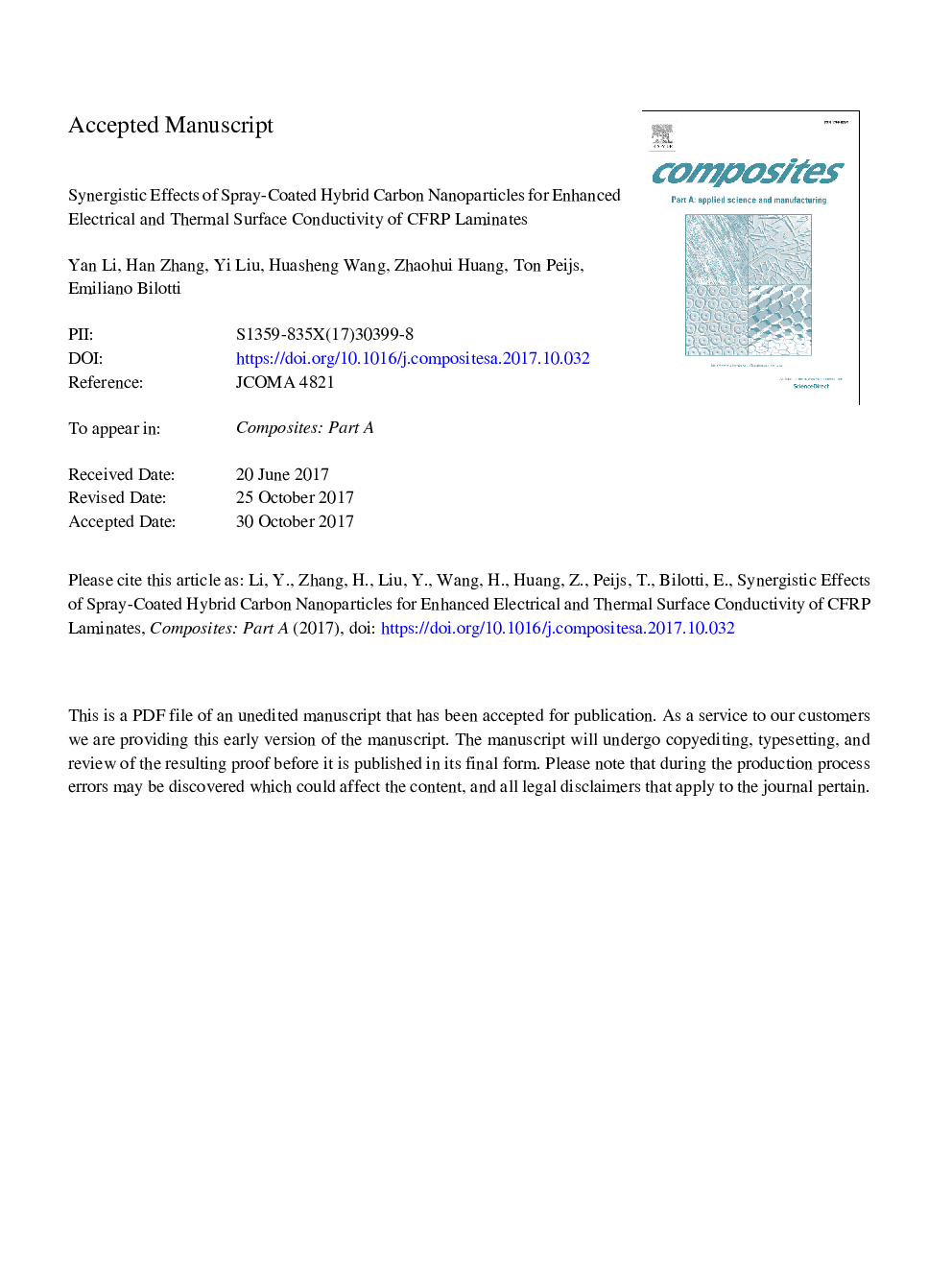| Article ID | Journal | Published Year | Pages | File Type |
|---|---|---|---|---|
| 7889717 | Composites Part A: Applied Science and Manufacturing | 2018 | 27 Pages |
Abstract
Carbon fibre reinforced plastics (CFRPs) are intensively used in modern aircraft structures because of their superb specific mechanical properties. Unfortunately their electrical and thermal conductivities are not sufficiently high for some applications like electromagnetic interference (EMI) shielding and lighting strike protection (LSP). The addition of external metallic structures, such as aluminium or copper mesh, is generally required with a compromise in terms of increased mass and manufacturing cost as well as reduced corrosion resistance. In the present work spray coating of carbon nanoparticles was utilized as a simple method to locally increase the electrical and thermal suface conductivity of CFRPs. The combined use of carbon nanotubes (CNTs) and graphene nanoplatelets (GNPs) synergistically reduced the CFRPs surface resistivity by four orders of magnitude (from 2-3â¯Î©/sq to 3â¯Ãâ¯10â4â¯Î©/sq) and increased the thermal conductivity by more than 7â¯times (from 200â¯Wâ¯mâ1â¯Kâ1 to 1500â¯Wâ¯mâ1â¯Kâ1), opening up possibilities for the replacement of metallic mesh structures for EMI shielding and LSP. An analytical model was introduced based on a one-dimensional heat conduction approach to predict the effective thermal conductivity for the hybrid nanofiller coating layer and its findings showed good agreement with experimental data.
Keywords
Related Topics
Physical Sciences and Engineering
Materials Science
Ceramics and Composites
Authors
Yan Li, Han Zhang, Yi Liu, Huasheng Wang, Zhaohui Huang, Ton Peijs, Emiliano Bilotti,
